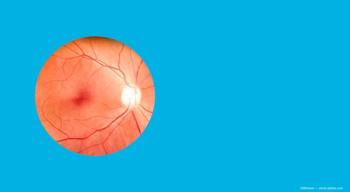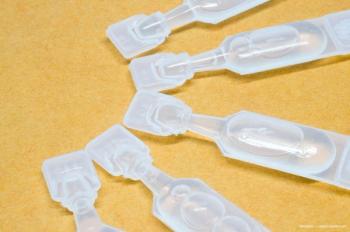
Trends in U.S. refractive surgery: 2015 ISRS survey
The 2015 International Society of Refractive Surgery survey, the twentieth such survey and the seventh year published online, presents new findings about surgeons’ preferences in corneal and lens-based surgeries, premium intraocular lenses (IOLs), and femtosecond cataract surgery.
The 2015 International Society of Refractive Surgery (ISRS) survey-the twentieth such survey and the seventh year published online-presents new findings about surgeons’ preferences in corneal and lens-based surgeries, premium IOLs, and femtosecond cataract surgery.
Richard Duffey, MD, and David Leaming, MD, who have private practices in Mobile, AL and Yucca Valley, CA, respectively, compiled the data and presented their findings during Refractive Subspecialty Day at the 2015 meeting of the American Academy of Ophthalmology. The survey had a response rate of about 10%.
Among the highlights from the 2015 survey are that femtosecond laser-assisted refractive cataract surgery is performed more often and its use has risen from 19% to 29% over the past year. The data showed that of surgeons performing more than five surgeries monthly, this group increasingly performed femtosecond laser-assisted cataract surgery and implanted toric and presbyopia-correcting IOLs. Among surgeons performing more than 25 surgeries monthly, femtosecond laser-assisted cataract surgery took a big jump, with 26% using that technology and the toric and presbyopia IOLs were stable.
This means that while femtosecond laser and implantation of toric and presbyopia-correcting lenses are not yet high-volume refractive surgeries, they are on the rise. LASIK and surface ablation procedures remained relatively stable over the past year.
Surgeon preferences for treating myopia and hyperopia were noteworthy. For instance, treatment of a 30-year-old patient with high myopia (-10 D) was fairly consistent across the board, with 29% of surgeons choosing LASIK, 33% phakic IOLs, 15% surface ablation, and 20% doing nothing.
For a 45-year-old patient with hyperopia with +3.00 D, the results showed that the number of surgeons who would perform LASIK is decreasing (down to about 50%), whereas other options remained relatively stable from the previous year. For a 45-year-old patient with hyperopia with +5.00 D, refractive lens exchange dominated the choices with 74% of surgeons saying it is their first choice.
Surgeons are managing astigmatism more during cataract surgery and even lower astigmatic levels are being addressed. The data showed that 68% of surgeons correct 0.5 to 1.00 D of astigmatism when it becomes relevant to vision, and 97% correct 1.25 D.
For patients with low astigmatic levels, surgeons are performing corneal incisions, either a manual limbal-relaxing incision or a femtosecond arcuate incision. For astigmatism over 1 D, some surgeons are implanting toric lenses and some arcuate incisions. For over 2 D, toric lenses are the leading choice by far. The survey also brought to light that 22% of surgeons are performing crosslinking, even though the procedure has not yet received FDA approval.
The data showed that there are healthy laser vision correction (LASIK and PRK) family indices among refractive surgeons, themselves, and their family members. The percentages of patients who choose laser vision correction in this group are about three times higher than in the general population. The individuals who know about refractive surgery from family members tend to undergo it more regularly than members of the general population. Generally, there was a slight decrease in the volume of laser correction procedures performed from 2014.
The excimer laser platforms most often used (i.e., VISX Star S4 ; Abbott Medical Optics and WaveLight; Alcon Laboratories) have remained stable. The femtosecond laser used most often is the LenSx (Alcon), followed by the Catalys (Abbott Medical Optics), according to survey results. About three-quarters of surgeons are using femtosecond lasers to create flaps.
Regarding topography devices, the numbers seem to indicate that surgeons are using more than one device, with the Atlas (Zeiss Humphrey) and Pentacam (Oculus) leading the pack.
When treating patients with presbyopia who do not have cataracts, monovision or modified monovision are the treatments preferred by 70% of the responders, followed by multifocals, accommodating lenses, and lastly, inlays.
In LASIK, the minimal residual stromal bed thickness that surgeons are willing to tolerate has increased over time, but most surgeons prefer more than 250 μm and want to maintain 275 to 300 μm of residual stroma.
The use of antibiotics, steroids, and nonsteroidal anti-inflammatory drugs has remained stable after laser vision correction. The use of trimethoprim sulfate, polymyxin B sulfate (Polytrim, Allergan) has increased somewhat. The steroid difluprednate ophthalmic emulsion (Durezol, Alcon) has increased over time and while prednisolone (Pred Forte, Allergan) has decreased, it remains the option that most surgeons select.
Finally, the development of ectasia after laser vision correction is declining.
This is the last year that Dr. Duffey and Dr. Leaming will conduct this survey. More data are available at
Newsletter
Don’t miss out—get Ophthalmology Times updates on the latest clinical advancements and expert interviews, straight to your inbox.



















































.png)


